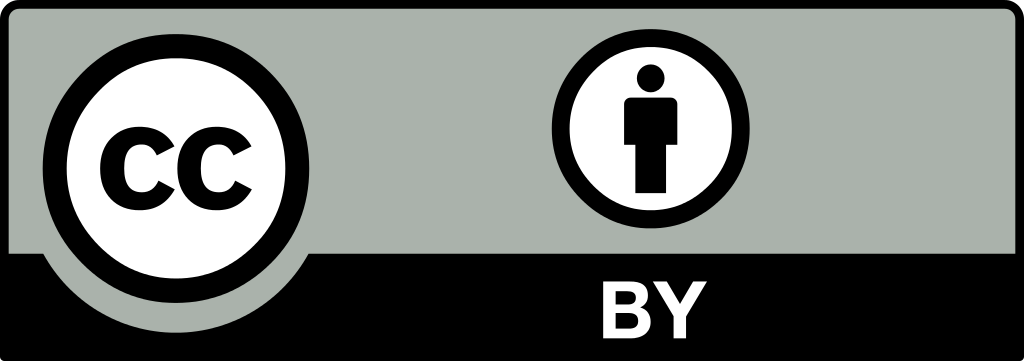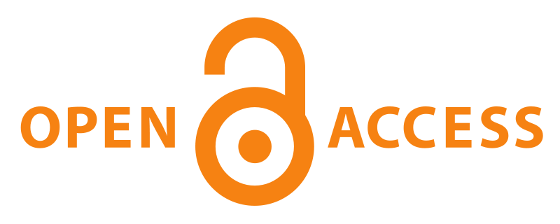Öz
Pazarlama alanındaki profesyoneller ve akademisyenler arasında,
ağızdan ağıza pazarlamanın son dönemlerde yeniden yükselişi dikkat çekici
düzeydedir. Tüketici satın alma karar sürecinin her aşamasında etkin olan
ağızdan ağıza pazarlama faaliyetleri, özellikle İnternet’in hızla yaygınlaşmasıyla
geleneksel pazarlama stratejilerinin etkinliğini sorgular olmuştur. Bu makalede
“ağızdan ağıza pazarlama” kavramı, pazarlama alanındaki Sosyal Bilimler Atıf
İndeksi’nde (SSCI) taranan bilimsel makaleler kapsamında incelenmiştir. Bu
çalışmanın, ilgili alanda çalışmak isteyenlere, araştırma probleminin
tanımlanmasında, modelinin oluşturulmasında, ağızdan ağıza pazarlamaya ilişki
değişkenlerin ortaya konmasında önemli ipuçları sunduğu düşünülmektedir.
Anahtar Kelimeler
ağızdan ağıza pazarlama pazarlama dergileri İnternet tüketici davranışı
Kaynakça
- Anderson, E.W. (1998), “Customer Satisfaction and Word of Mouth”, Journal of Service Research, 1(1), ss.5–17.
- Berry, L.L. (1980), “Services Marketing is Different”, Business, 30(May/June), ss.24-9.
- Bowman, D. ve Narayandas, D. (2001), “Managing Customer-Initiated Contacts with Manufacturers: The Impact on Share of Category Requirements and Word-of-Mouth Behavior”, Journal of Marketing Research, 38, ss.291–297.
- Brown, T.J., Barry, T.E., Dacin, P.A. ve Gunst, R.F. (2005), “Spreading the Word: Investigating Antecedents of Consumers' Positive Word-Of- Mouth Intentions and Behaviors in a Retailing Context”, Journal of The Academy of Marketing Science, 33(2), ss.123-138.
- Carroll, B.A. ve Ahuvia, A.C. (2006), “Some Antecedents and Outcomes of Brand Love”, Marketing Letters, 17(2), ss.79-89.
- Dellarocas, C., Zhang, X.Q. ve Awad, N.F. “Exploring The Value of Online Product Reviews in Forecasting Sales: The Case of Motion Pictures”, Journal of Interactive Marketing, 21(4), ss.23-45.
- Eliashberg, J., Jonker, J.J., Sawhney, M.S. ve Wierenga, B. (2000), “MOVIEMOD: An Implementable Decision-Support System for Prerelease Market Evaluation of Motion Pictures”, Marketing Science, 19(3), ss.226-243.
- Foster, A. ve Rosenzweig, M. (1995), “Learning by Doing and Learning from Others: Human Capital and Technical Change in Agriculture”, Journal of Political Economy, 103(6), ss.1176–1210.
- Godes, D. ve Mayzlin, D. (2004), “Using Online Conversations to Study Word- Of-Mouth Communication”, Marketing Science, 23(4), ss.445-560.
- Goldenberg, J., Libai, B. ve Muller, E. (2001), “Talk of the Network: A Complex Systems Look at the Underlying Process of Word-of-Mouth”, Marketing Letters, 12(3), ss. 211-223.
- Hahn, M., Park, S., Krishnamurthi, L. ve Zoltners, A.A. (1994), “Analysis of New Product Diffusion Using A 4-Segment Trial-Repeat Model”, Marketing Science, 13(3), ss.224-247.
- Iacobucci, D. ve Hopkins, N. (1992), “Modeling Dyadic Interactions And Networks in Marketing”, Journal of Marketing Research, 29(1), ss.5- 17.
- Kozinets, R.B., de Valck, K., Wojnicki, A.C. ve Wilner, S.J.S. (2010), “Networked Narratives: UnderstandingWord-of-Mouth Marketing in Online Communities”, Journal of Marketing, 74 (March), ss.71–89.
- Kumar, V., Bohling, T.R. ve Ladda, R.N. (2003), “Antecedents and Consequences of Relationship Intention: Implications for Transaction and Relationship Marketing”, Industrial Marketing Management, 32(8), ss.667-676.
- Kumar, V. ve Krishnan, T.V. (2002), “Multinational Diffusion Models: An AlternativeFramework”, Marketing Science, 21(3), ss.318-330.
- Marketing Science Institute, MSI. (2010), “2006–2008 Research Priorities”, www.msi.org/pdf/MSI_RP06-08.pdf [erişim tarihi: 18.08.2010].
- Mayzlin, D. (2006), “Promotional Chat on the Internet”, Marketing Science, 25(2),ss.155-163. Merton, R.K. (1968), Social Theory and Social Structure, The Free Press, New York, NY.
- Morgan, N.A. ve Rego, L.L. (2006), “The Value of Different Customer Satisfaction and Loyalty Metrics In Predicting Business Performance”, Marketing Science, 25(5), ss.426-439.
- Murray, K.B. (1991), “A Test of Services Marketing Theory - Consumer Information Acquisition Activities”, Journal of Marketing, 55(1), ss.10- 25.
- Nyer, P.U. (1997), “A Study of the Relationships Between Cognitive Appraisals and Consumption Emotions”, Journal of The Academy of Marketing Science, 25(4), ss. 296-304.
- Price, L.L. ve Arnould, E.J. (1999), “Commercial friendships: Service provider- client relationships in context” , Journal of Marketing, 63(4), ss. 38-56.
- Stephens, N. ve Gwinner, K.P. (1998), “Why Don't Some People Complain? A Cognitive-Emotive Process Model of Consumer Complaint Behavior”, Journal of The Academy of Marketing Science, 26(3), ss.172-189.
- Winer, R.S. (2009), “New Communications Approaches in Marketing: Issues and Research Directions”, Journal of Interactive Marketing, 23(2), ss.108-117.
- Villanueva, J., Yoo, S. Ve Hanssens, D.M. (2008), “ The Impact of Marketing- Induced versus Word-Of-Mouth Customer Acquisition on Customer Equity Growth”, Journal of Marketing Research, 45(1), ss. 48-59.
- Zeithaml, V.A., Parasuraman, A. ve Berry, L.L. (1985), “Problems and Strategies in Services Marketing”, Journal of Marketing, 49(2), ss.33- 46.
Öz
Kaynakça
- Anderson, E.W. (1998), “Customer Satisfaction and Word of Mouth”, Journal of Service Research, 1(1), ss.5–17.
- Berry, L.L. (1980), “Services Marketing is Different”, Business, 30(May/June), ss.24-9.
- Bowman, D. ve Narayandas, D. (2001), “Managing Customer-Initiated Contacts with Manufacturers: The Impact on Share of Category Requirements and Word-of-Mouth Behavior”, Journal of Marketing Research, 38, ss.291–297.
- Brown, T.J., Barry, T.E., Dacin, P.A. ve Gunst, R.F. (2005), “Spreading the Word: Investigating Antecedents of Consumers' Positive Word-Of- Mouth Intentions and Behaviors in a Retailing Context”, Journal of The Academy of Marketing Science, 33(2), ss.123-138.
- Carroll, B.A. ve Ahuvia, A.C. (2006), “Some Antecedents and Outcomes of Brand Love”, Marketing Letters, 17(2), ss.79-89.
- Dellarocas, C., Zhang, X.Q. ve Awad, N.F. “Exploring The Value of Online Product Reviews in Forecasting Sales: The Case of Motion Pictures”, Journal of Interactive Marketing, 21(4), ss.23-45.
- Eliashberg, J., Jonker, J.J., Sawhney, M.S. ve Wierenga, B. (2000), “MOVIEMOD: An Implementable Decision-Support System for Prerelease Market Evaluation of Motion Pictures”, Marketing Science, 19(3), ss.226-243.
- Foster, A. ve Rosenzweig, M. (1995), “Learning by Doing and Learning from Others: Human Capital and Technical Change in Agriculture”, Journal of Political Economy, 103(6), ss.1176–1210.
- Godes, D. ve Mayzlin, D. (2004), “Using Online Conversations to Study Word- Of-Mouth Communication”, Marketing Science, 23(4), ss.445-560.
- Goldenberg, J., Libai, B. ve Muller, E. (2001), “Talk of the Network: A Complex Systems Look at the Underlying Process of Word-of-Mouth”, Marketing Letters, 12(3), ss. 211-223.
- Hahn, M., Park, S., Krishnamurthi, L. ve Zoltners, A.A. (1994), “Analysis of New Product Diffusion Using A 4-Segment Trial-Repeat Model”, Marketing Science, 13(3), ss.224-247.
- Iacobucci, D. ve Hopkins, N. (1992), “Modeling Dyadic Interactions And Networks in Marketing”, Journal of Marketing Research, 29(1), ss.5- 17.
- Kozinets, R.B., de Valck, K., Wojnicki, A.C. ve Wilner, S.J.S. (2010), “Networked Narratives: UnderstandingWord-of-Mouth Marketing in Online Communities”, Journal of Marketing, 74 (March), ss.71–89.
- Kumar, V., Bohling, T.R. ve Ladda, R.N. (2003), “Antecedents and Consequences of Relationship Intention: Implications for Transaction and Relationship Marketing”, Industrial Marketing Management, 32(8), ss.667-676.
- Kumar, V. ve Krishnan, T.V. (2002), “Multinational Diffusion Models: An AlternativeFramework”, Marketing Science, 21(3), ss.318-330.
- Marketing Science Institute, MSI. (2010), “2006–2008 Research Priorities”, www.msi.org/pdf/MSI_RP06-08.pdf [erişim tarihi: 18.08.2010].
- Mayzlin, D. (2006), “Promotional Chat on the Internet”, Marketing Science, 25(2),ss.155-163. Merton, R.K. (1968), Social Theory and Social Structure, The Free Press, New York, NY.
- Morgan, N.A. ve Rego, L.L. (2006), “The Value of Different Customer Satisfaction and Loyalty Metrics In Predicting Business Performance”, Marketing Science, 25(5), ss.426-439.
- Murray, K.B. (1991), “A Test of Services Marketing Theory - Consumer Information Acquisition Activities”, Journal of Marketing, 55(1), ss.10- 25.
- Nyer, P.U. (1997), “A Study of the Relationships Between Cognitive Appraisals and Consumption Emotions”, Journal of The Academy of Marketing Science, 25(4), ss. 296-304.
- Price, L.L. ve Arnould, E.J. (1999), “Commercial friendships: Service provider- client relationships in context” , Journal of Marketing, 63(4), ss. 38-56.
- Stephens, N. ve Gwinner, K.P. (1998), “Why Don't Some People Complain? A Cognitive-Emotive Process Model of Consumer Complaint Behavior”, Journal of The Academy of Marketing Science, 26(3), ss.172-189.
- Winer, R.S. (2009), “New Communications Approaches in Marketing: Issues and Research Directions”, Journal of Interactive Marketing, 23(2), ss.108-117.
- Villanueva, J., Yoo, S. Ve Hanssens, D.M. (2008), “ The Impact of Marketing- Induced versus Word-Of-Mouth Customer Acquisition on Customer Equity Growth”, Journal of Marketing Research, 45(1), ss. 48-59.
- Zeithaml, V.A., Parasuraman, A. ve Berry, L.L. (1985), “Problems and Strategies in Services Marketing”, Journal of Marketing, 49(2), ss.33- 46.
Ayrıntılar
| Birincil Dil | tr;en |
|---|---|
| Bölüm | Makaleler |
| Yazarlar | |
| Yayımlanma Tarihi | 30 Nisan 2012 |
| Yayımlandığı Sayı | Yıl 2012 Cilt: 26 Sayı: 2 |




